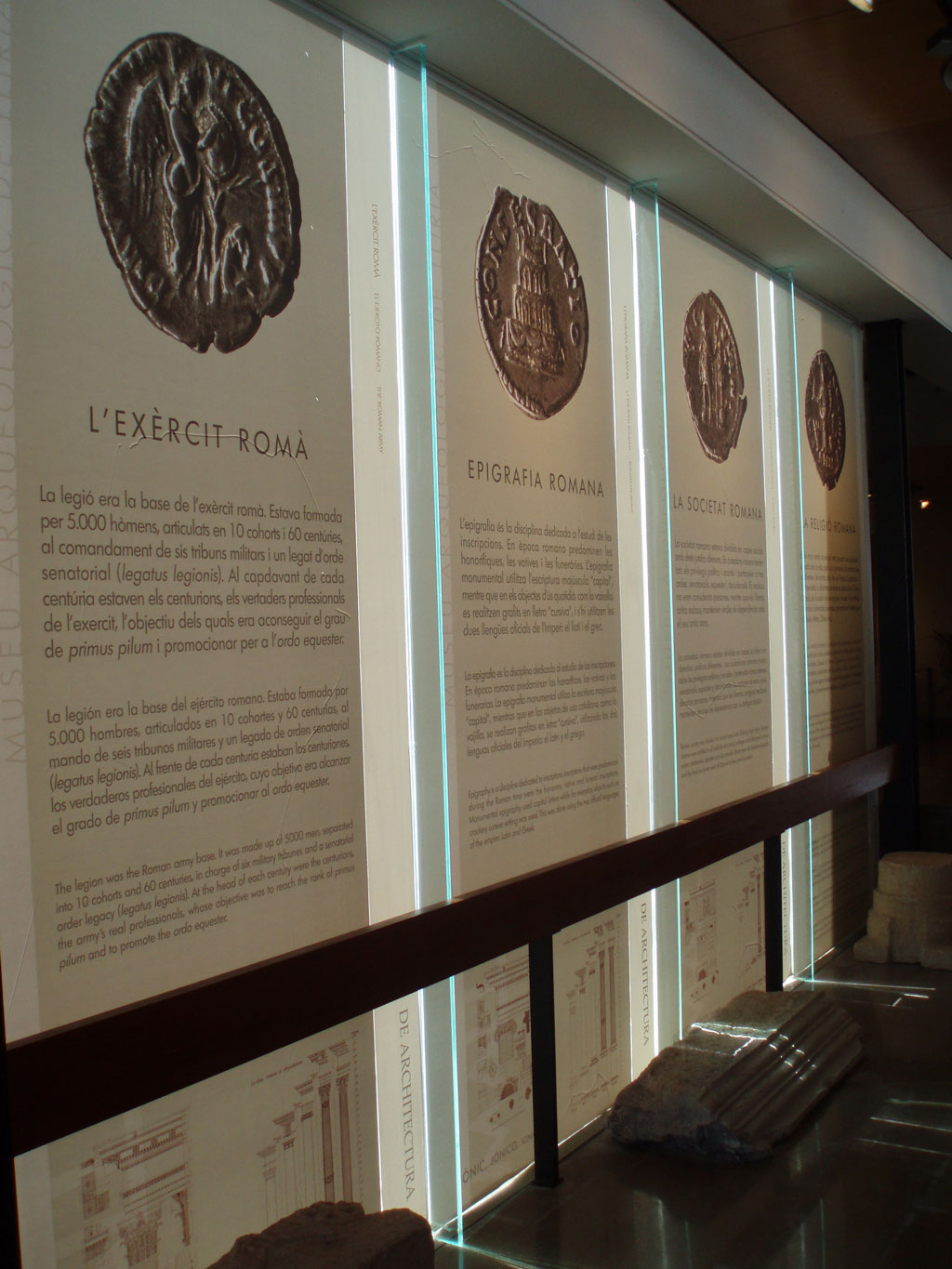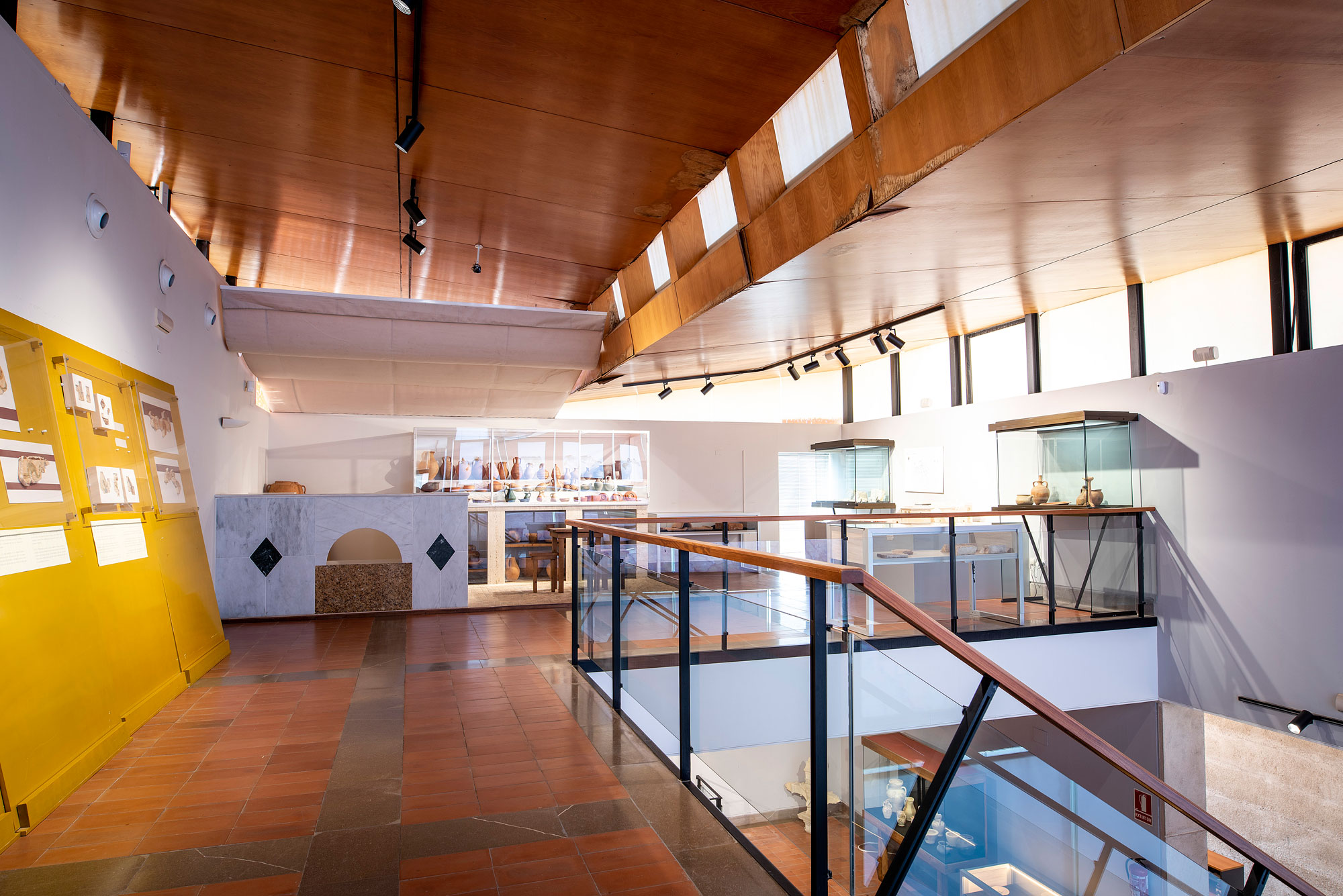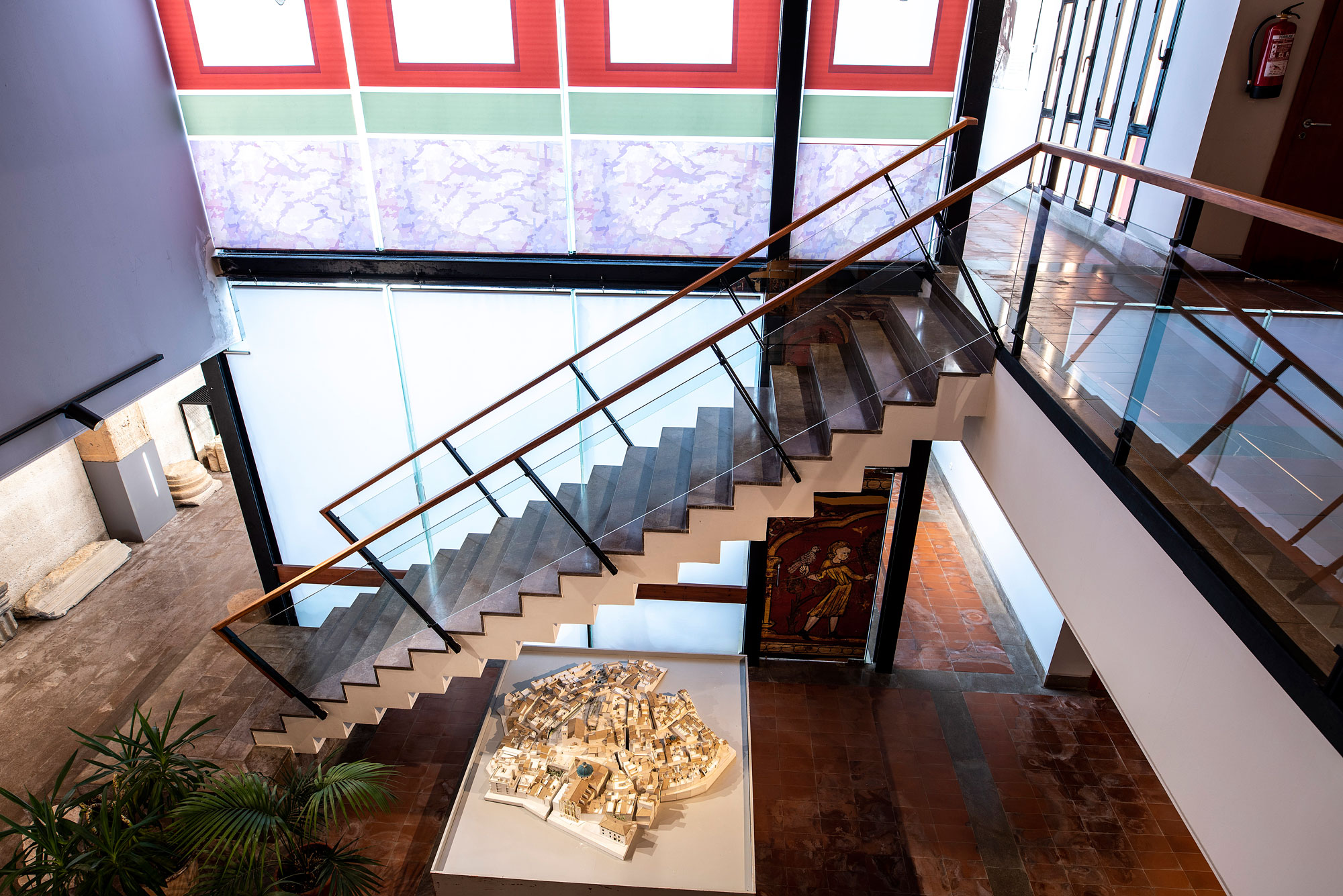The MALL, Llíria Archaeological Museum is situated in the upper part of Vila Vella. It was built in 1997 and opened in 2000 on the same spot where the Andalusi Alcazaba and the medieval castle of Llíria were found. Its two floors house an important collection of archaeological pieces recovered during the excavations in Llíria which reveal the town’s historical past. It has five exhibition halls and an audiovisual room, all of which are dedicated to the Iberian, Roman and medieval eras.
MALL. Llíria Archaeological Museum


IBERIAN ERA
The first hall at the MALL is situated on the ground floor and is dedicated to the world of the Iberians. On exhibition there is a collection of ceramics unearthed from the excavations carried out around the settlements of Tossal de Sant Miquel, ancient Edeta, and Mont-Ravana. The vases with epigraphic and figurative designs are worth mentioning. Also on exhibition in the hall is the funerary sculpture of a bull, which symbolised the guardian of the dead for the Iberians.
ROMAN ERA
The top floor of the MALL is dedicated entirely to the Roman era. It exhibits architectural pieces from this era and recreates ancient buildings belonging to the Roman town of Edeta.
On display in the second hall at the MALL there is a sample of one of the most important treasures of coins of the whole Roman Hispania, which are set out in chronological order. It is the renowned “Tresor del Duc de Llíria – Duke of Lliria’s Treasure” made up of a collection of 6,000 silver coins.
A small corridor, which leads to the third hall, displays the prints of the Roman Temple of the Nymphs done by the French historian Alexandre Laborde during the 19th century.
On display in the third hall there is a collection of Roman ceramics known as “Lliçó per a una Cel·lebració – Lesson for a Celebration” which represents the introduction of a new Religión to the pupils by the teachers. The hall also recreates a life-sized Thermopolia. It is a place where food and drinks were served to the public, and on display there is a wide range of ceramic kitchenware, tableware and storage containers from the Roman town. Also on exhibition in this hall there is a model that recreates the original aspect of the archaeological ensemble comprising the Oracular Sanctuary and the Roman Thermae of Mura.
The fourth hall is situated on the ground floor. It is an epigraphic corridor that exhibits a collection of Roman honorary and funerary inscriptions, among which it is worth highlighting the one dedicated to Marcus Cornelius Nigrinus Curiatius Maternus. This singular historical figure who came from Edeta was a Consular Senator in the Roman provinces of Aquitaine, Mesia and Syria, and Trajan’s rival for the Imperial Throne of Rome.

MEDIEVAL ERA
The fifth and last hall at the MALL, situated on the first floor, is dedicated to the medieval world.
It exhibits a collection of ceramic objects from the 14th and 15th centuries and a liturgical chalice and glass cruet set from the 14th century. In this hall it is worth highlighting, above all, two panel paintings from the Church of the Blood of Christ. On the one hand, a panel belonging to the Gothic-Mudejar coffered ceiling from the 13th century decorated with figurative representations and mythological scenes, and on the other hand, five original panels from the reredos of Saint Peter the Apostle and Saint Peter of Verona of an international Gothic style that dates back to the 14th and 15th centuries.


